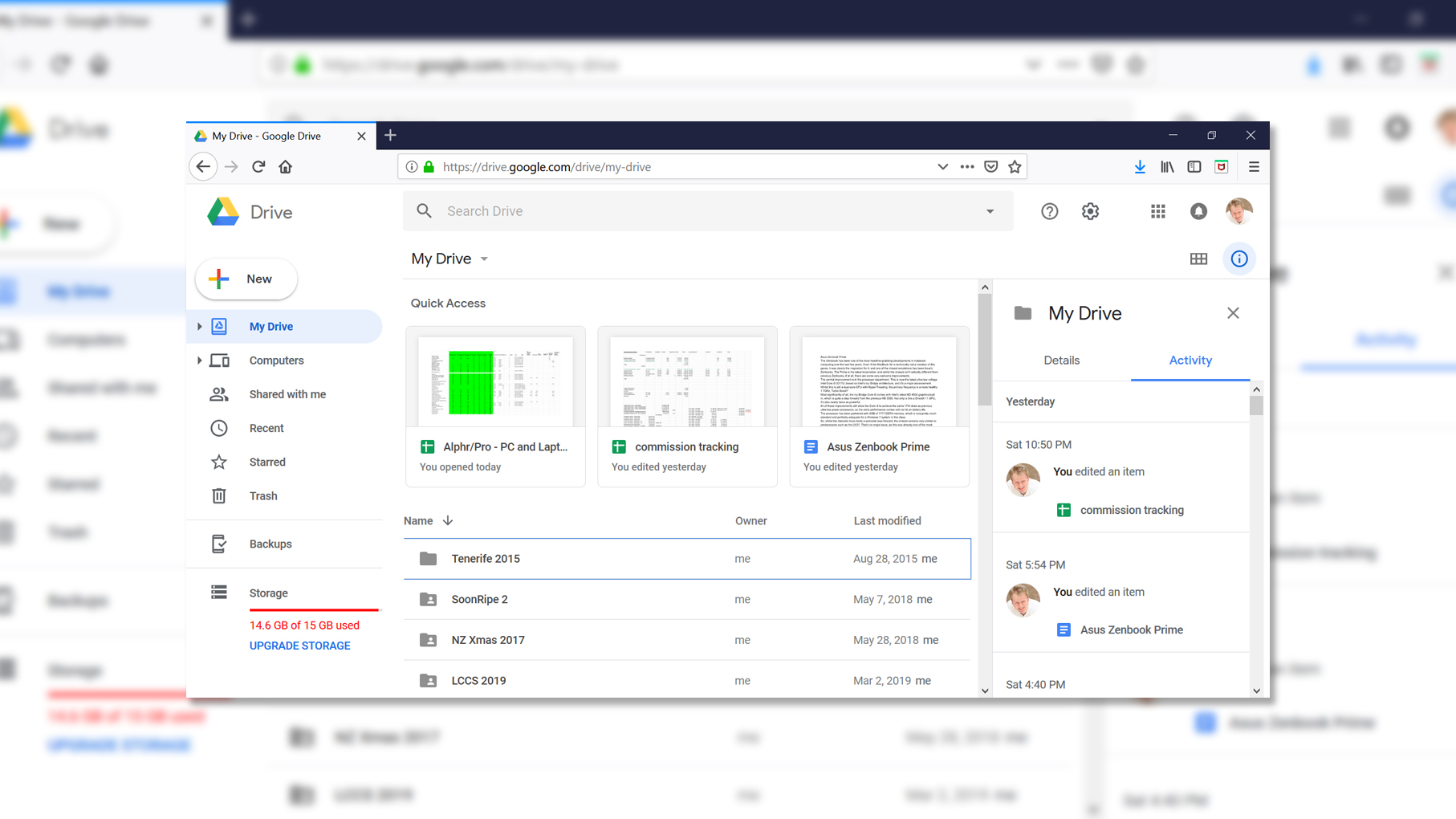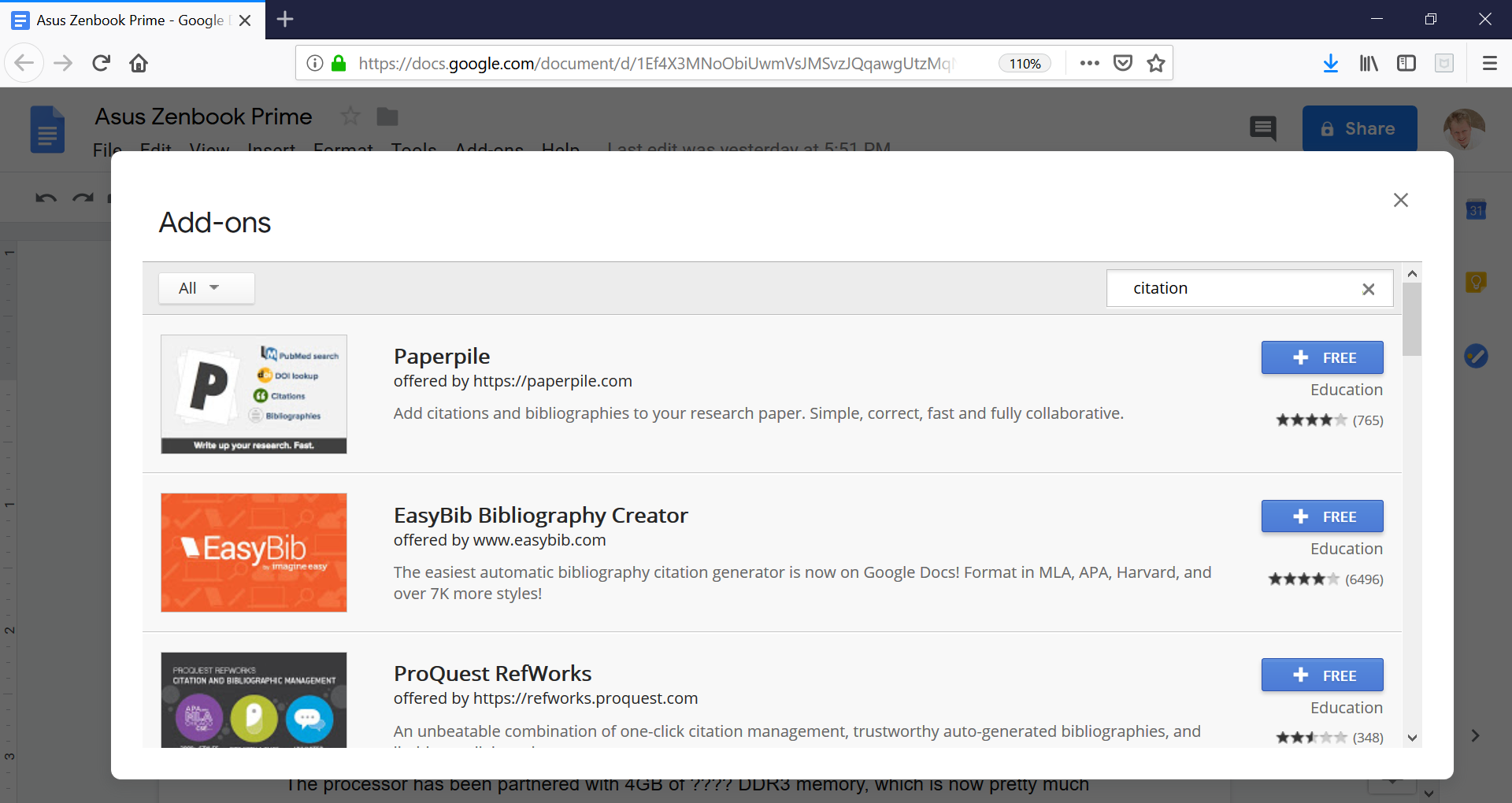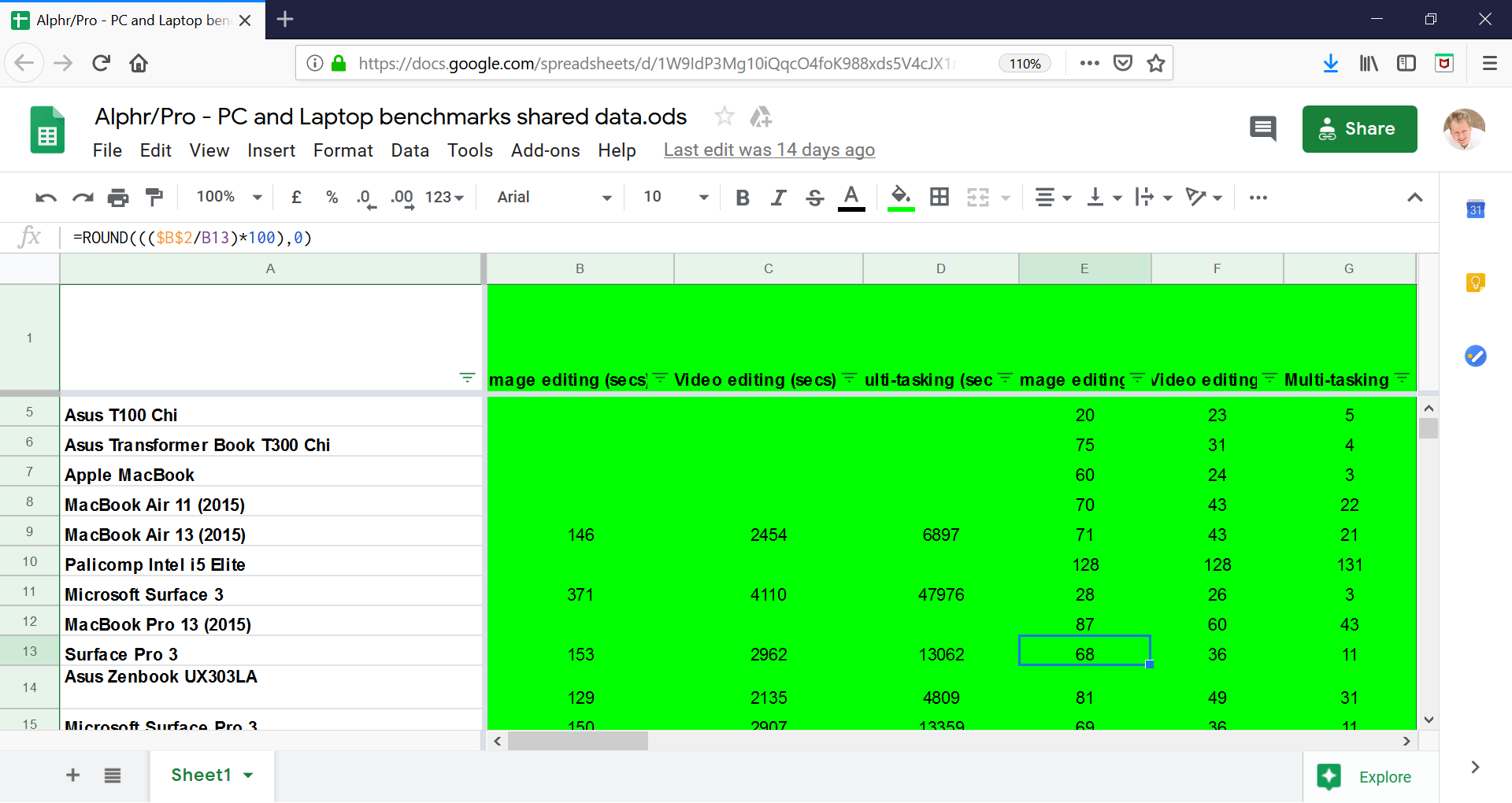Google G Suite review: Suite like chocolate
If you can make the leap to a cloud-centric usage model, G Suite provides seamless real-time document collaboration.


Google G Suite provides a wealth of cloud-based office software and functionality, particularly for collaboration, but is more problematic if you need to work offline on a regular basis.
-
+
Document collaboration extremely easy; Applications can be used on any system with a browser; Users don’t need to install any software; Unlimited storage with more than five users on Business package or above; Extensive Add-on features
-
-
Individual apps lack features compared to Microsoft desktop alternatives; Only 30GB storage included with Basic version

Google has been a "disruptive" company on many levels since its inception. Gmail changed the way we used email by providing an inbox size that kept growing ahead of user needs. When the company began also offering competent office software via the browser, for free, it seemed like Microsoft Office had a real challenge on its hands.
Now, around a fifth of businesses use G Suite, which is less than a third of those that use Office 365. But this is still a significant figure, making G Suite the second most popular office suite, and the obvious one to consider instead of Microsoft's. So to accompany our review of Microsoft Office 365, here we look at what G Suite has to offer in comparison.
Google G Suite review: Options
Everyone with a Google account can access Gmail, Calendar, Docs, Sheets, Slides, Drive (including 15GB of free storage), and numerous other Web-based Google applications. But if you want more cloud storage and a professional email address that doesn't end in gmail.com, then you will need one of the paid subscriptions, of which there are currently three. Unlike Microsoft's subscriptions, these are true monthly prices that you don't have to pay for annually upfront, and the number of users you can have on any of them is unlimited.
The Basic subscription costs 3.30 per user per month and increases the online storage to 30GB across mail and files. It also gives your company control over employee accounts, which you won't have if they all use their own Gmail accounts. This means you can change their passwords when they leave, and take away access to their Google Drive storage at the same time. You can also restrict collaboration access to within your organisation, and create group email addresses, as well as have multiple email versions that end up in the same mailbox.
The Business edition of G Suite costs twice as much at 6.60 per user per month, but has significantly upgraded features. For fewer than five users, each one gets 1TB of cloud storage, but for five or more users the capacity is unlimited, which is a distinct advantage over Microsoft's alternatives. There is also an easy environment for creating Web apps for your organisation, and much more sophisticated search, security and e-discovery features compared to the Basic version. Above this, there's the Enterprise edition for 20 per user per month, which further enhances security management features and e-discovery.

However, it's worth noting that in April 2019, Google plans to increase the prices of the Basic and Business accounts by $1 and $2 respectively, although the company hadn't announced what this will translate to in the UK at the time of writing. There are also separate versions of G Suite for Education or Government clients.
Google G Suite review: Office Applications
One very clear distinction between G Suite and Microsoft Office 365 is that there are no installable desktop versions of the G Suite applications. However, a G Suite administrator can enable offline file and app access for their users within the Chrome browser. Similarly, Chromebooks already work in this way, so you can load locally stored documents into Docs, Sheets and Slides within the Web browser, whether or not you have a working Internet connection. Your edits will then synchronise back out to cloud storage when connectivity is available again.
For general document creation and editing, Google's offering is very serviceable, and there are clear advantages from the native online nature of G Suite. The various applications also have the ability to import and save back to Office file formats, amongst others - although not always faultlessly, with the formatting compatibility of the Slides to PowerPoint translation being particularly suspect in some cases. In the last year or so, G Suite's version control facilities were enhanced so that different versions can have different names. This also enabled the ability to suggest changes from the smartphone versions.
Gmail is the granddaddy of G Suite applications, and its biggest strength is its Google-powered search, which is as fast and capable as you would expect. A lot of extra features can be added with third-party augmentations. However, by default you can't sort email or group it, which may lead users to turn to a standalone email client such as Thunderbird or (perish the thought) Microsoft Outlook, particularly if they need to access email offline.
The Google Docs word processor is perfectly capable at the core functions of document creation and formatting, but lacks special capabilities such as Word's SmartArt insertion. Some people might prefer the cleaner, simpler interface compared to Word, although this is in large part thanks to having fewer features. There are also more subtle deficiencies that put it behind Microsoft Word. For example, whilst you can easily call up a word and character count, the rolling count in Word's bottom left corner is more streamlined as it doesn't require a menu click.
However, you can extend the capabilities of all the Google Apps via Add-ons, many of which are free. For example, Docs doesn't come with a table of contents facility as standard, but you can add one via an Add-on. There are numerous free Add-ons for bibliographies and citations, which again aren't included as standard. The sophisticated mail merge capabilities of Word don't seem to be replicated, however, although there are Add-on options that will mail merge with an address database held in Sheets.

Whilst word processors reached the point years ago where few people cared which one they were using for basic writing, Google Sheets poses a viable challenge to Excel. It includes capable PivotTable features and lots of functions that parallel those in the Microsoft competitor, although not always with the same name, which will be a bit confusing if you're already an Excel function whizz. The extremely useful VLOOKUP works in a very similar way, however. You can create a similar range of charts, including some of the recent Office additions like waterfall visualisations.
Sheets gains extra power thanks to being hosted online. You can connect other applications to a Google Sheet and draw data from it via an API to use elsewhere. Equally powerful is the ability to set up a Google Form that feeds straight into a Sheet, so you can get users to enter data and have it automatically appear in a handy spreadsheet format. This can allow Sheets to form the hub of a database-driven survey app that outputs dynamically to a web page, for example.
Google Slides is perhaps the weakest of the G Suite apps. It has all the basic needs and again has some benefits from its online nature with the ability to search YouTube directly and insert videos into your presentation. However, the theme and animation options are considerably more pedestrian than PowerPoint's and Apple Keynote's. However, it is now possible for third parties to add custom templates, which improve the design capabilities.
Google G Suite review: Cloud Services and Smartphone Apps
Google was obviously a search company to start with, and the enterprise iterations of G Suite include a Custom Search that places an Explore button at the bottom of application interfaces that provides useful tips but also searches across related documents in your Drive and the Web, allowing you to drag elements into the document you are working on.
There are site-building tools such as My Business that allow you to quickly create a web presence for your company. The Google App Maker, available with Business and Enterprise Editions, takes this further, letting you develop software to automate business processes. Again, Add-ons and extra apps integrate with the main software to provide extra functionality. For example, you can plug in Apogee Leave Management to stitch this conveniently into the Calendar, so any leave booked shows up automatically.
Google's mobile apps provide easy options for working on documents offline and on the move. You will have to tag the files you want to work on offline, so they can be downloaded and stored locally, but after that you can work on them with your smartphone or tablet when there's no Internet connection. The changes will be synchronised back to the cloud next time you have a connection. Like Microsoft's smartphone apps, the features are reduced over the Web-based apps.
Google G Suite review: Verdict
The choice of Google G Suite really depends on how your organisation can work with the need to be online most of the time, and also how much you will need authentic Office-format documents. Switching to a model focused around the cloud is a big cultural change, which could be uncomfortable if your staff tends to work away from reliable network connections.

For some businesses, however, the online aspect has a bonus -- your software is entirely managed, and your technical support needs thereby dramatically reduced. You can get a similar experience with the Business Essentials version of Office 365, which only provides the Web-based software, not desktop. With G Suite, however, all your users need is a working computer running any operating system with an Internet connection and a browser, (which can even be Internet Explorer 6) so there's no software to install. This has made G Suite particularly attractive for education, where the low cost of entry of Chromebooks is an added bonus.
The live collaboration aspects of G Suite are mature and seamless, too. It's very easy to set up a document and have umpteen users work on it together, with their changes reflected in real time as they work. This is something that won't be anywhere near as easy to accomplish with the desktop editions of Microsoft Office applications, despite the recent cloud editing enhancements. However, not all companies need or want to work this way, and the majority are likely used to operating in a more standalone fashion, as they will have done for decades.
In summary, whilst Microsoft Office applications are unquestionably more powerful and fully featured than their G Suite equivalents, the Google alternative has the edge when it comes to uncomplicated cloud-based collaboration. So it's really a matter of "horses for courses" as to which is best for your company. More traditional businesses pumping out Office-format documents regularly will want to stick with the Microsoft choice. But if your employees regularly work together on documents, and particularly if you have a lot of remote workers, G Suite makes this simple to achieve.
Verdict
Google G Suite provides a wealth of cloud-based office software and functionality, particularly for collaboration, but is more problematic if you need to work offline on a regular basis.
Get the ITPro daily newsletter
Sign up today and you will receive a free copy of our Future Focus 2025 report - the leading guidance on AI, cybersecurity and other IT challenges as per 700+ senior executives
Dr James Morris has worked as a technology journalist for over 25 years, including spending nine years on the staff of market-leading computer magazine PC Pro, the last five of which were as the publication’s editor. He specialises in enterprise-grade software and hardware, with a particular focus on content creation. He launched a pioneering video channel for HEXUS.net in 2006 and ran the video reviews channel for TrustedReviews.com for four years. He also runs a successful online digital content and commercial video production company, t-zero communications Ltd.
Dr Morris is a prolific technology writer and contributes commercial content for major IT brands including AMD, BlackBerry, Dell, Cognizant, HP, and IBM. He published a book on artificial intelligence, Can Computers Create Art? in 2009. He is also an academic, and is currently Pathway Director of the MA, Interactive Journalism at City, University of London.
Previously, he was course leader for the BA in Web Media Production at Ravensbourne University. He has a PhD in Philosophy, Art and Social Thought from the European Graduate School in Switzerland, a Master's in Media Arts from the New School in New York, USA, and a Bachelor's in Social Anthropology from the London School of Economics.
Dr. Morris can be found on Twitter at @Cyberwest, or emailed at j@tzero.co.uk
-
 Westcon-Comstor and Vectra AI launch brace of new channel initiatives
Westcon-Comstor and Vectra AI launch brace of new channel initiativesNews Westcon-Comstor and Vectra AI have announced the launch of two new channel growth initiatives focused on the managed security service provider (MSSP) space and AWS Marketplace.
By Daniel Todd Published
-
 Third time lucky? Microsoft finally begins roll-out of controversial Recall feature
Third time lucky? Microsoft finally begins roll-out of controversial Recall featureNews The Windows Recall feature has been plagued by setbacks and backlash from security professionals
By Emma Woollacott Published
-
 The UK government wants quantum technology out of the lab and in the hands of enterprises
The UK government wants quantum technology out of the lab and in the hands of enterprisesNews The UK government has unveiled plans to invest £121 million in quantum computing projects in an effort to drive real-world applications and adoption rates.
By Emma Woollacott Published